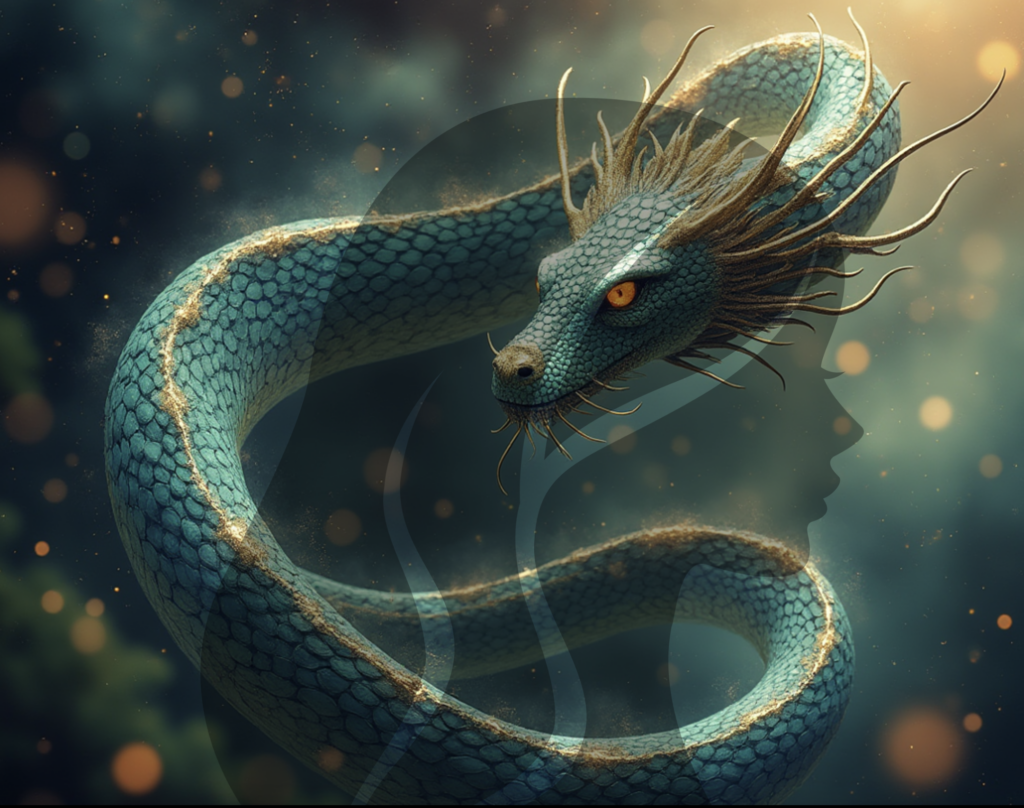 Kimberly Becker
Kimberly Becker
Aftermath
I didn’t want to look,
because seeing what will be
is harder to anticipate
than living into misfortune
blindly, like the rest
But I could not resist
the lure of power (few can)
and so I looked
and people say I
didn’t speak for weeks,
dumbstruck
by what I’d seen,
although they didn’t know
my secret
and I never told
until now in this wavy
writing in the language
they taught me,
since I remained
their prisoner,
if not physically any longer
following the kill,
then mentally,
since the ordeal
never left me
I replayed and replayed
it in my mind
And people say
I would often
startle at the slightest sound
and always had to have
a weapon at the ready
and hardly sleep
and if I did,
then the Uktena
coiled around me
in my dreams
and I could never
kill it then
And I would wake
soaked in sweat,
fighting off my blanket
that by then had wound
around me like a curse, like a pall,
like the giant serpent that overtook my life
even though I took its own lifeblood
_______________
Of mixed descent, including Cherokee, Kimberly L. Becker’s latest poetry collection is Bringing Back the Fire (Spuyten Duyvil). Her sixth collection, Rivering, is forthcoming, also from Spuyten Duyvil. Her seventh, Uktena: A Poetic Narrative is forthcoming from MadHat Press. Recently anthologized work appears in Unpapered: Writers Consider Native American Identity and Cultural Belonging (University of Nebraska Press) and in 23 Tales: Appalachian Ghost Stories, Legends, and Other Mysteries (Howling Hills). www.kimberlylbecker.com
Backstory & Authors Comments: “Aftermath” is from my seventh collection titled Uktena: A Poetic Narrative forthcoming from MadHat Press. The book is based on the traditional Cherokee story of the giant horned serpent, the Uktena, and the prisoner, Aganunitsi, captured by the Cherokee, who finally succeeded in killing it for its powerful and prophesying Transparent (diamond set in its forehead), although at great cost to his own psyche. (Recounted in James Mooney’s Cherokee History, Myths, and Sacred Formulas.) On a personal note, as a trauma survivor, I am well-acquainted with the hypervigilance experienced by the character in this poem.
Editor’s Comments and Image Credit: Perhaps the skinny verse might allude to a snake hanging dead.
Among Cherokee people, a horned serpent is called an Uktena. Anthropologist James Mooney describes the creature: Those who know say the Uktena is a great snake, as large around as a tree trunk, with horns on its head, and a bright blazing crest like a diamond on its forehead, and scales glowing like sparks of fire. It has rings or spots of color along its whole length, and cannot be wounded except by shooting in the seventh spot from the head, because under this spot are its heart and its life. The blazing diamond is called Ulun’suti — “Transparent”— and he who can win it may become the greatest wonder worker of the tribe. But it is worth a man’s life to attempt it, for whoever is seen by the Uktena is so dazed by the bright light that he runs toward the snake instead of trying to escape. As if this were not enough, the breath of the Uktena is so pestilential, that no living creature can survive should they inhale the tiniest bit of the foul air expelled by the Uktena. Even to see the Uktena asleep is death, not to the hunter himself, but to his family.
….. For more information, see https://en.wikipedia.org/wiki/Horned_Serpent
…..and https://www.appalachianhistory.net/2007/05/legend-of-uktena.html
Image Credit: The image was created with the input of “Uktena in a dream that wraps around her silhouette” to an image generator (Wixel by Wix.com) and combined with a woman in silhouette (pngtree) with the snake appearing to entangle her.
